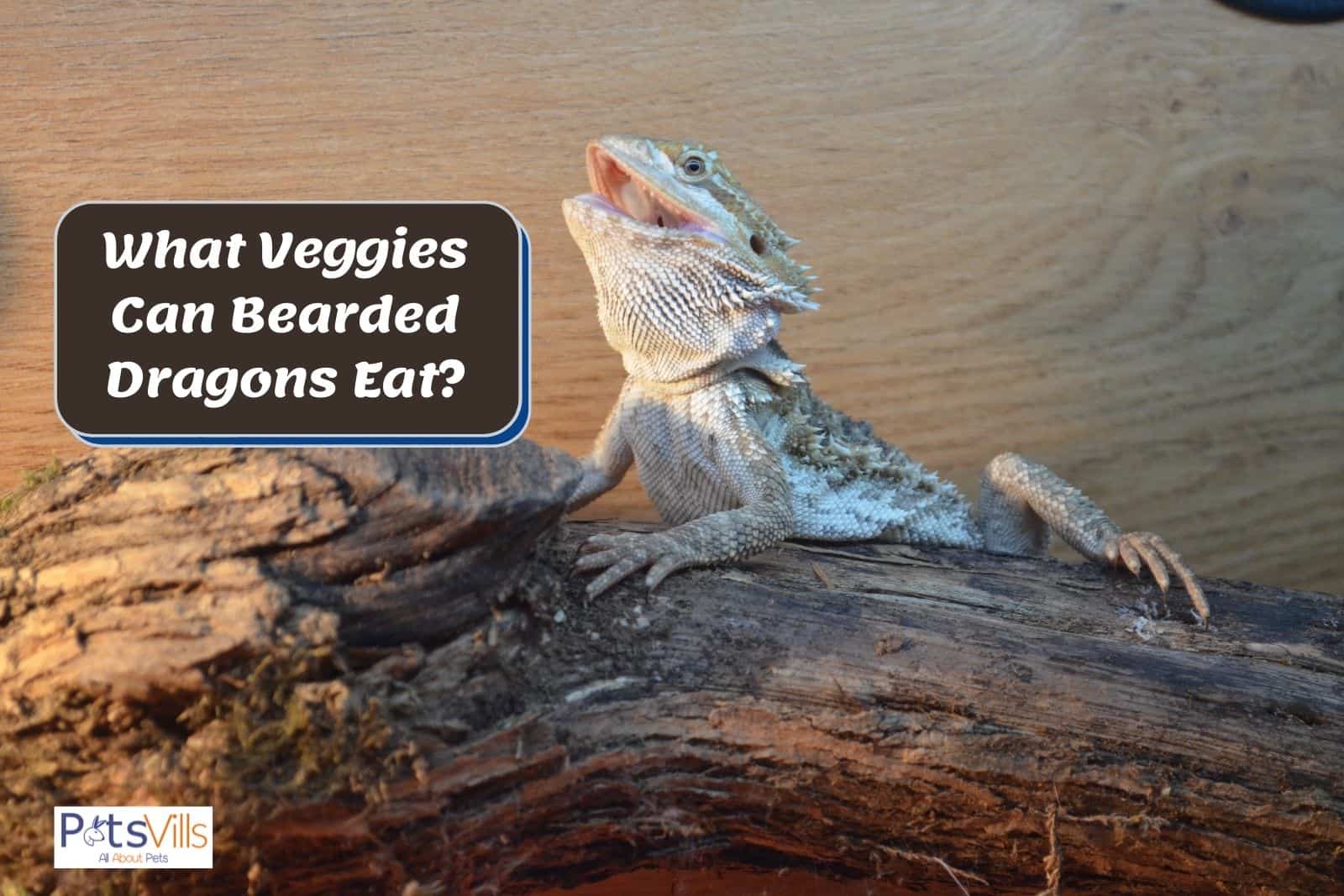Are you wondering about veggies that bearded dragons can eat?
Bearded dragons aren’t picky eaters, but as you’ll find out, not all vegetables and plants are safe for your reptile friend.
Just because they WILL eat something doesn’t always mean they SHOULD.
So, keep reading to discover vegetables that bearded dragons can eat and what not to feed your bearded dragon.
Table of Contents
What Vegetables Can Bearded Dragons Eat?
Bearded dragons are omnivores, meaning they eat animal and plant-based protein. Their diet consists of insects, fruits, and vegetables in different proportions, depending on the age.
In general, adult bearded lizards need 75% of greens/vegetables/fruits and 25% of insects and critters to provide the necessary nutrients for optimum health.
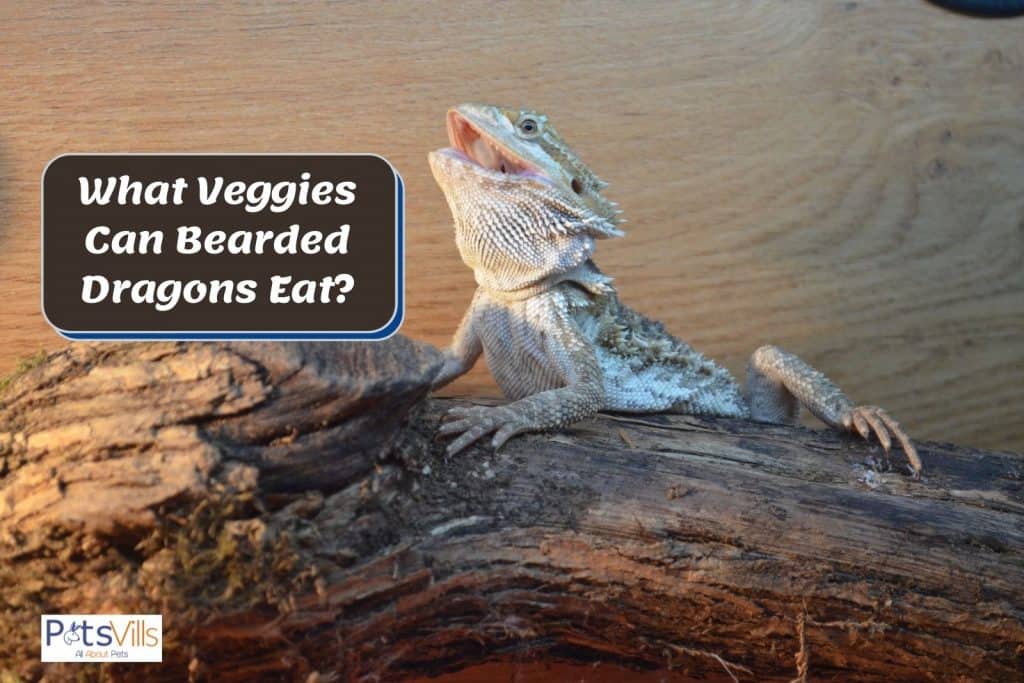
And since no one likes to eat the same vegetable day after day, you’re right to wonder what food is safe to add to your lizard’s salad.
So, what kind of vegetables can bearded dragons eat? Let’s find out together.
Best Staple Veggies That Bearded Dragons Can Eat
When you’re feeding bearded lizards, the most important factor is the calcium to phosphorus ratio. It should be 2:1 to prevent calcium deficiency and other metabolic disorders.
Specialists say, “anything dark green and leafy can make up a large part of the diet.” So, the best vegetables and greens that can be a regular part of your bearded lizard’s salad include:
- Collard greens. They’re rich in calcium, fiber, Vitamin A, Vitamin C, and Vitamin K, all necessary for your pet’s health.
- Butternut squash, acorn squash, and yellow squash. Squash is rich in vitamins, calcium, and low amounts of phosphorus.
- Dandelion greens (leaves and flower). Dandelions are balanced in nutrients/vitamins and have high fiber and calcium content.
- Mustard greens and turnip greens. These veggies are a great source of folate, necessary for the proper development of bearded lizards.
- Endive and Escarole. Both leafy greens have high vitamin and nutrient content, suitable for bearded lizards.
- Arugula and alfalfa plants. These are high in calcium and have a great calcium to phosphorous ratio for bearded lizards.
- Chicory greens. It’s rich in fiber and has plenty of Vitamins A, K, and C.
Remember to peel, chop and grate the veggies/greens into small pieces and remove the seeds to ensure your pet won’t choke.
Purchase our new e-book for a complete feeding guide:
Good Vegetables and Greens For Bearded Dragons
Some vegetables have higher than the recommended calcium to phosphorous ratio. But you still can feed them a couple of times a week as long as you combine them with high-calcium food.
- Artichoke. It has great fiber content and is full of necessary vitamins and minerals. Feed it raw and cut it into small pieces.
- Green Beans. It’s an excellent veggie for bearded lizards since it contains beta carotenes and Vitamin B.
- Red, green, and yellow bell peppers are veggies that bearded dragons can eat raw. Just remember to remove the seeds.
- Kale. Can bearded dragons have kale? Yes, they eat kale with pleasure, and it’s a great veggie, thanks to its high vitamin A content.
- Parsnips and watercress. These are moderate oxalates (more about what oxalates are in a bit) but can be a great occasional treat.
- Pumpkin without the seeds. It can cause diarrhea in large amounts, so feed it occasionally.
Acceptable Greens & Vegetables for Bearded Dragons
Vegetables and greens which contain oxalic acid (oxalates) or are high in goitrogens should be fed every ten days or so.
The problem with oxalates is that they bind with calcium. As a result, your bearded lizard’s body can’t absorb the calcium from the food.
On the other hand, goitrogens interfere with how the body absorbs iodine. Too much of these vegetables can affect your bearded dragon’s thyroid gland.
As such, bearded lizards can eat these vegetables, but they should represent no more than 10% of their diet. Feed them from time to time.
- Beet greens. Feed beet greens less than once a month since they’re very high in oxalates.
- Bok Choy. Very nutritional for bearded dragons but contains goitrogens. Mix with other staple vegetables and feed every 7-10 days.
- Brocolli. Bearded dragons eat broccolli but feed it once in 10 days or less since it’s high in goitrogens and oxalates.
- Carrots. Feed carrots and carrot tops no more than once a week, mixed with other green vegetables.
- Cabbage. Bearded dragons eat cabbage, but it should be in small quantities no more than every 7-10 days. Red cabbage is better than green.
- Celery. Bearded dragons eat celery leaves and stalks. Offer it raw and chopped into small pieces.
- Lettuce. It has high water content but not much nutritional value. Add it for extra moisture to your bearded dragon diet.
- Other acceptable fresh vegetables include radish, cucumber, cauliflower, Brussel sprouts, and turnips.
Adding calcium supplements or calcium powder is advisable when feeding high oxalate vegetables to ensure your pet doesn’t get calcium deficiency.
What Vegetables Are Harmful to Bearded Dragons?
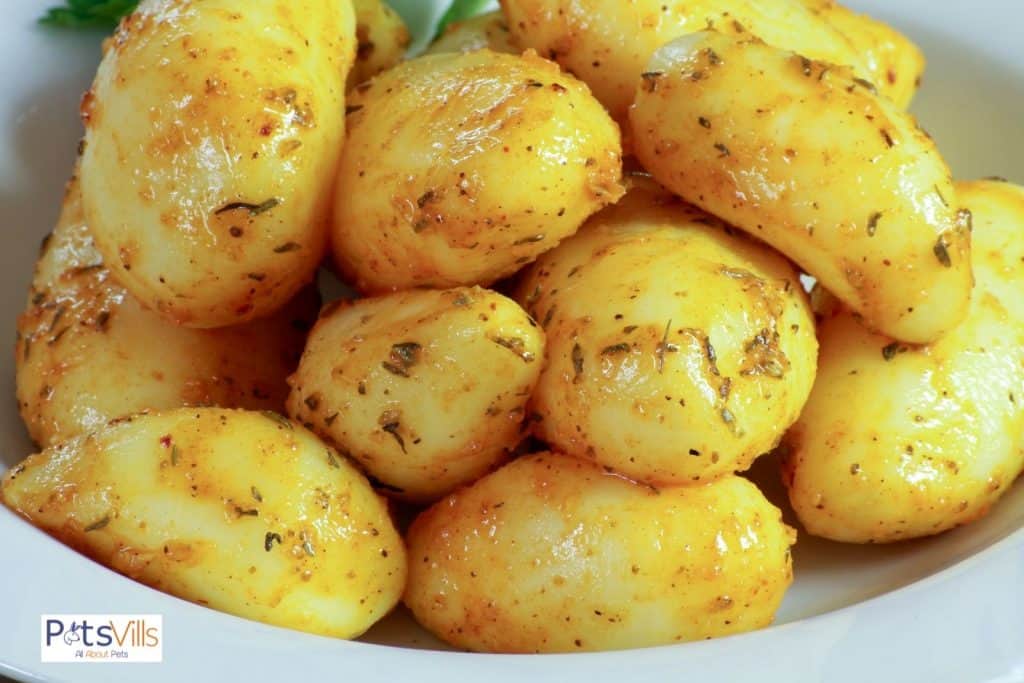
Not all veggies are safe for bearded lizards.
So, we’re going to look at which vegetables are harmful if you feed them in large amounts and which are potentially toxic.
Bad Vegetables for Bearded Dragons
In general, vegetables with high oxalic acid or too much phosphorus can be harmful to bearded lizards. So, we don’t recommend feeding your bearded lizard these foods:
- Corn
- Spinach
- Tomatoes
- Potatoes
- Swiss chard
But there’s no need to panic if your bearded dragon eat spinach, tomatoes, corn, or sweet potatoes once in a while.
Potentially Toxic Veggies for Bearded Lizards
Certain vegetables aren’t beneficial at all for bearded lizards because they’re too acidic or contain so much phosphorous they become toxic to lizards:
- Eggplant. Potentially harmful since it’s too acidic.
- Rhubarb. Very toxic because of its 6:1 phosphorous to calcium content.
- Members of the onion family, such as chives, onion, leek, and garlic. They are very high in oxalates and not recommended for reptiles.
- Tomato plants, eggplant plants, potato plants, and their leaves
- Buttercup and daffodils
What Other Foods Are Harmful to Bearded Dragons?
Since we’re talking about veggies that bearded dragons can eat, we should mention what other food to avoid when feeding your pet.
In general, bearded lizards shouldn’t eat:
- Mushrooms. They’re toxic due to their high phosphorus to calcium ratio and acidity content.
- Avoid wild-caught insects. Wild insects might carry parasites. Stick to crickets, meal worms, wax worms, and butter worms to keep your reptile dragon happy.
- Fireflies and ladybugs. These are deadly to bearded lizards.
- Avocado. It’s very toxic to bearded lizards, even in small amounts, due to its high oxalic acid content.
- Citrus fruits, such as lemons and oranges.
- Bearded dragons shouldn’t eat fish since it’s not part of their natural diet.
Check this informational video:
5 Common Diet Mistakes to Avoid When Feeding Bearded Dragons
Let’s talk about some common diet mistakes first-time bearded dragon owners often make and which can
#1 Not Taking Age into Consideration
Baby bearded lizards have different nutritional needs and faster metabolism than adults. As such, they require frequent meals throughout the day and should be fed mainly insects, such as crickets.
Unlike adults, baby bearded lizards should get up to 75% of their protein from insects and the rest from vegetables and fruits.
Check this video to learn more:
#2 Overfeeding
Bearded dragons have a healthy appetite and won’t stop eating when they’re full. As such, it’s easy to overfeed them with insects or vegetables, which leads to obesity.
In general, specialists recommend 10-20 crickets in one feeding session for adults and “as many crickets as it can during each feeding session” for babies.
#3 Giving Mealworm to Juvenile Bearded Dragons
Mealworms aren’t a good choice for baby beardies. These insects have hard outer shells, which baby lizards can’t digest well and may cause intestinal blockage.
Crickets and other small feeder insects are the best bearded dragon foods for baby lizards until they’re five months old.
#4 Forgetting About Gut Loading
Gut loading means feeding the live insects with fruits and vegetables high in nutrients at least a day before you give the said insects to your lizard.
In this way, your pet reptile gets more nutrients from their food. It’s not a pleasant task, but it’s necessary for the well-being of your lizard.
#5 Not Using Supplements
Reptiles need a lot of calcium and vitamin D to prevent metabolic bone disease and maintain proper skeletal growth.
Even a well-balanced diet of insects, veggies, and fruits might not provide your bearded dragon with all the necessary calcium. That’s why you should dust the food with supplements.
Talk to your vet about the right amount to use and how often you should do it.
FAQs
Can Bearded Dragons Eat Frozen Vegetables?
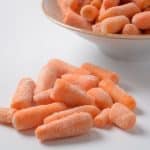
Yes, pet lizards can have frozen vegetables. But frozen veggies lose a lot of their vitamins and minerals and aren’t as nutritious as fresh ones.
Moreover, you should thaw the frozen vegetable to room temperature before serving it to your pet lizard.
Do I Need to Give My Bearded Dragons Vitamins and Minerals?
In general, veterinarians recommend reptile mineral supplements once a week and calcium powder (with vitamin D) 2-3 times a week.
Check with your vets about the specific supplements your bearded pet lizard needs to their diet and how often you should provide them.
What Is a Bearded Dragon’s Favorite Vegetable?
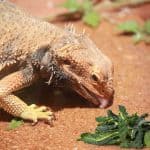
Bearded lizards aren’t capricious when it comes to vegetables and greens. They will eat almost anything you put in their bowl, including things that aren’t good for their health. That’s why it’s so important to know what veggies bearded dragons can eat.
Conclusion
Bearded lizards aren’t so easy to feed like cats or dogs. You have to pay careful attention to their calcium intake and ensure they’ve got various veggies and greens in their salad bowl.
It’s vital to follow your bearded dragon feeding schedule and consult a reptile professional if you notice any lack of appetite or other worrisome symptoms.
References
- “Bearded Dragons – Feeding.” 2021. Vca_corporate. 2021. https://vcahospitals.com/know-your-pet/bearded-dragons-feeding.
- “Full Bearded Dragon Food Chart – Best Staples and More.” 2019. Care Guides for Pet Lizards. August 10, 2019. https://www.lizards101.com/full-bearded-dragon-food-chart-best-staples-and-more/.
- “How Many Crickets to Feed a Bearded Dragon (Baby-Adult).” 2021. Reptile Direct. February 18, 2021. https://www.reptiledirect.com/how-many-crickets-to-feed-a-bearded-dragon/.
- Wildlife Informer. 2021. “What Not to Feed Bearded Dragons (21 Things) – Wildlife Informer.” Wildlife Informer. January 29, 2021. https://wildlifeinformer.com/what-not-to-feed-bearded-dragons/.
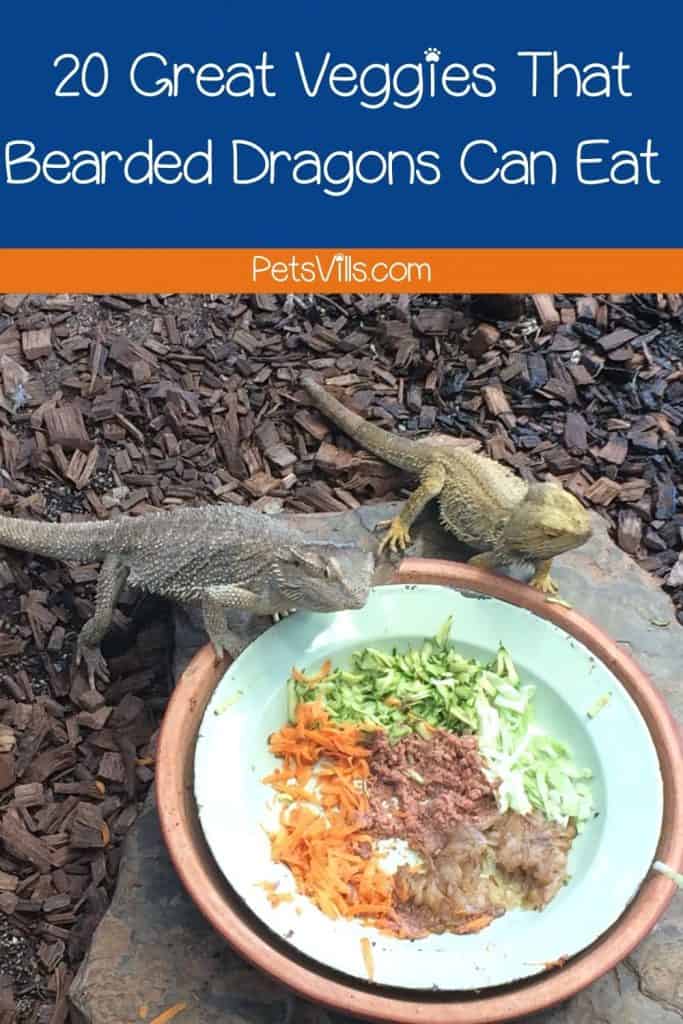
What do you think about these veggies that bearded dragons can eat? What vegetables does your bearded lizard like the most? Share your experience in the comment section.
Grigorina grew up surrounded by animals – dogs, cats, cows, goats, sheep, and horses and that has shaped her into what I am today – a crazy cat lady who always has a place for one more cat (or a dog). She has two female cats – Kitty and Roni, and two tomcats – Blacky and Shaggy, but she also feeds her neighbors’ cats when they come for a visit. I just can’t say no to them. Follow her on FACEBOOK AND INSTAGRAM
Read her latest articles HERE
Learn more about her

